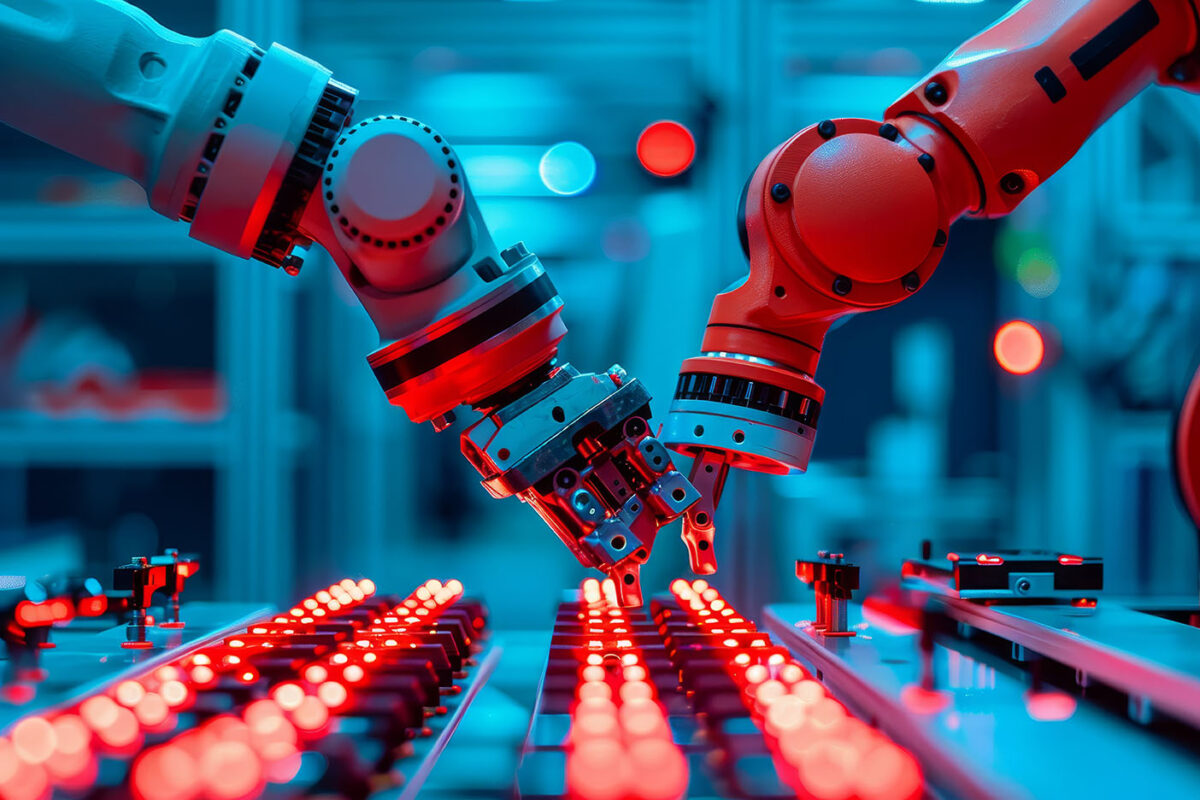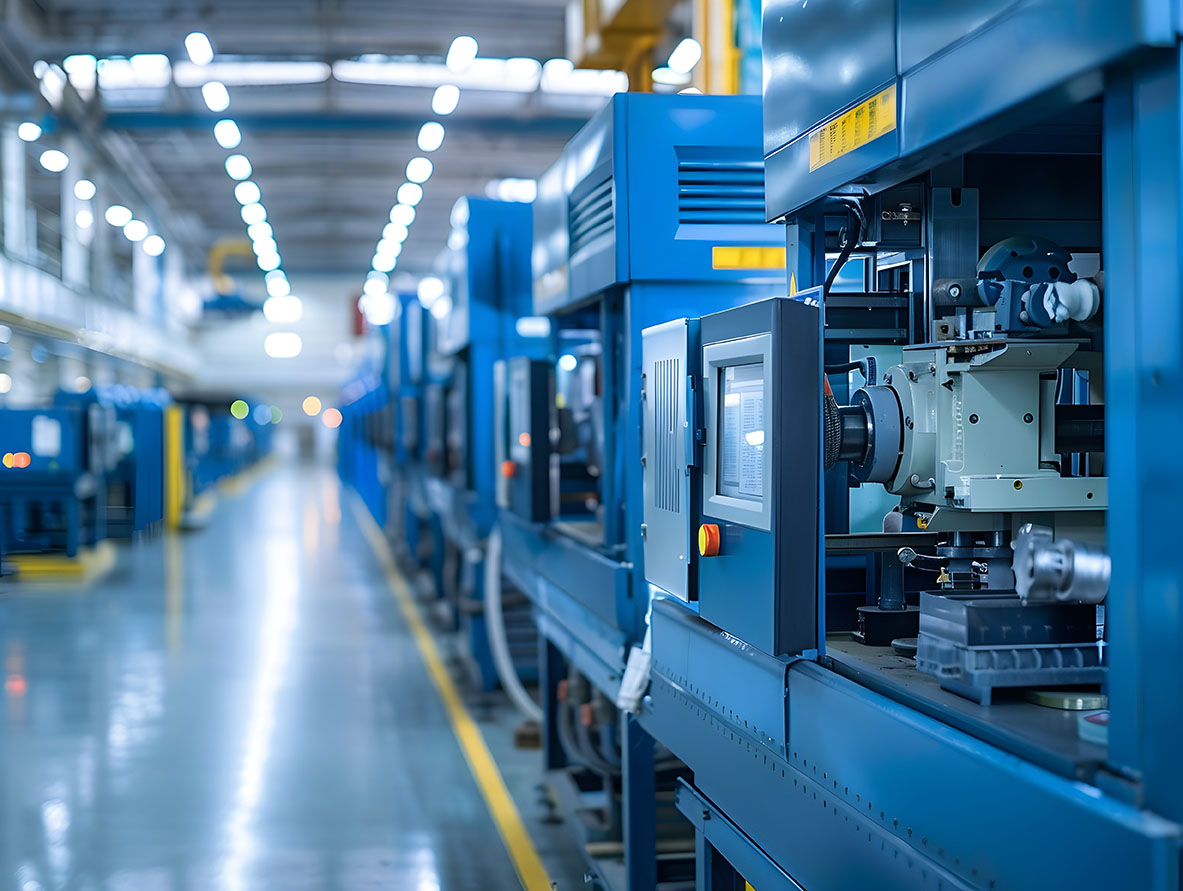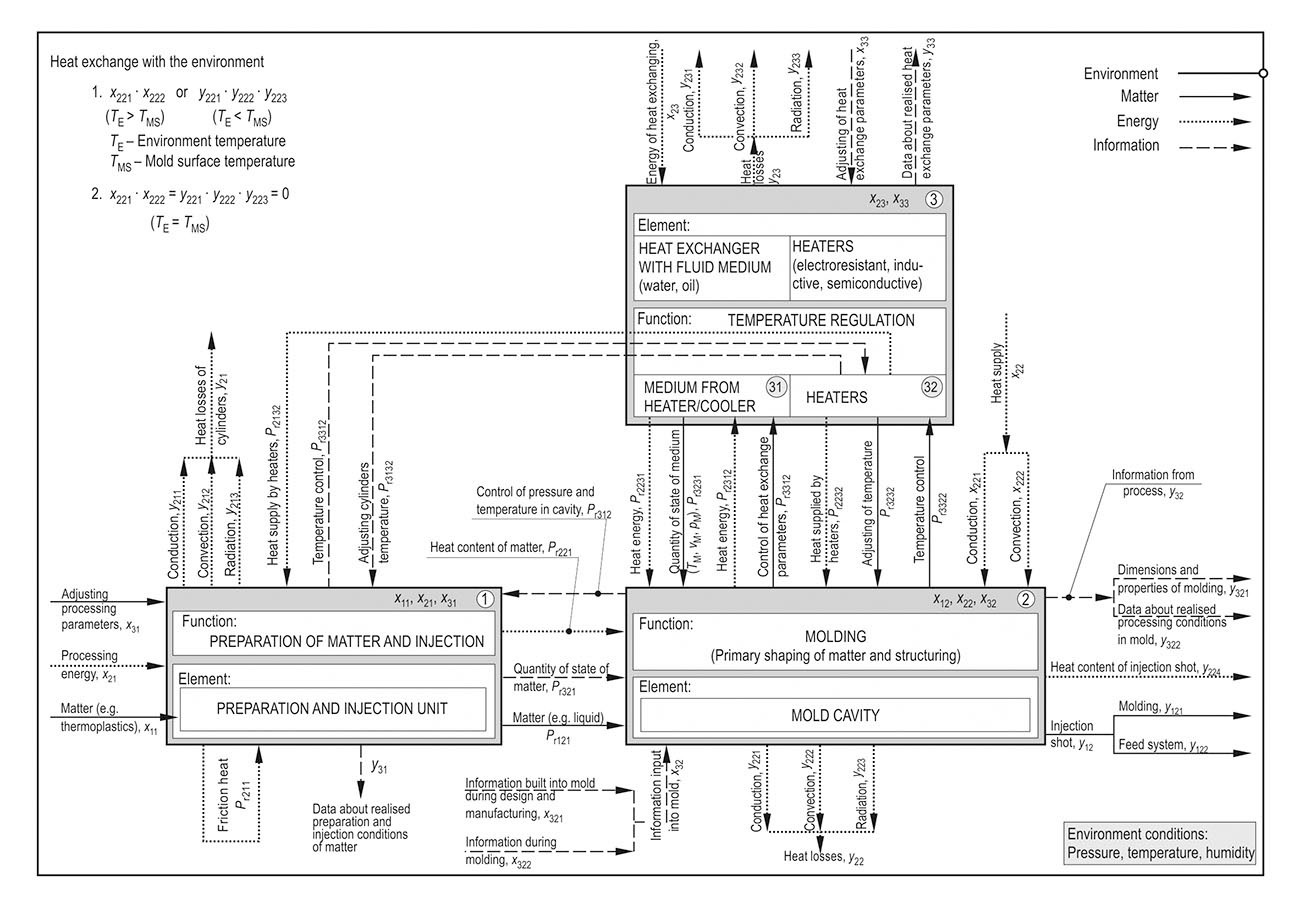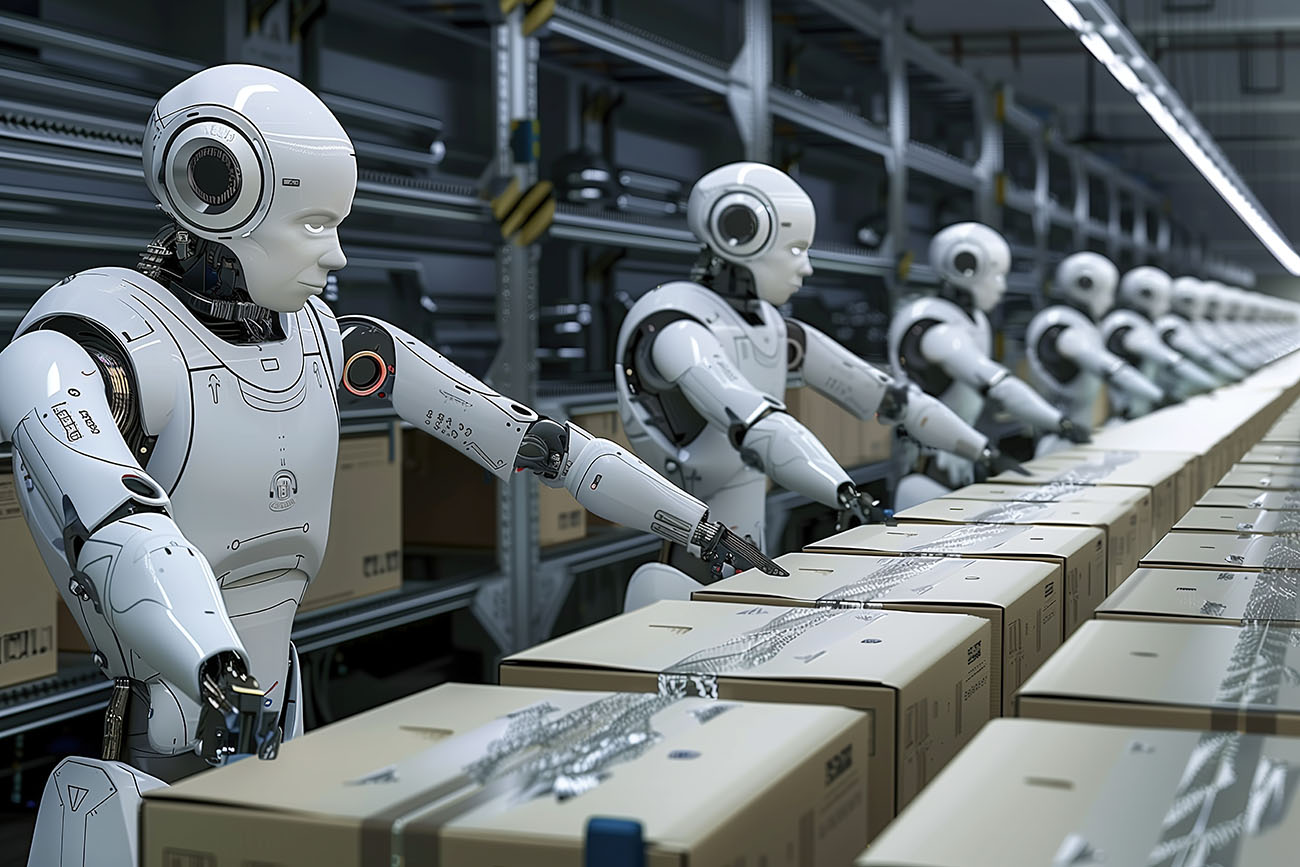Injection Molding Meets Industry 6.0

Industry 6.0 represents the next evolution in manufacturing, driven by artificial intelligence (AI) and autonomous decision-making robots, known as infobots. The progression of injection molding technology and its integration with advanced robotics offer greater efficiency and sustainability.
Injection molding of thermoplastics, originating in the late 19th century, remains a fundamental cyclic process for shaping polymers and metals. With the development of industrial robots, “Industry X.0” classifications emerged, naming production processes according to robot types. Moreover, rapid advancements in artificial intelligence have introduced “Industry 6.0,” a concept where AI-equipped robots autonomously adjust and optimize processes.
You can also read: Industry 4.0 in Injection Molding
To clarify the concept of Injection Molding 6.0, this text will explore the evolution of injection molding technology. It will also emphasize specific requirements and detailed procedures within this framework.
Historical Development
According to the available data, the first version of metal die casting originates from a patent granted in 1849 (2). Plastic injection molding has developed on the model of metal die casting.
The piston injection molding machine of the brothers J. W. and I. Hyatt from 1872 is considered the forerunner of modern machines for this process. Celluloid was processed with this injection machine. Modern injection molding began around 1920 with a patent by the German A. Eichengrün, and H. Buchholz constructed a commercially usable machine. It was a piston injection molding machine that prevailed until the sixties of the 20th century. The Frenchman Quellery patented a machine for the injection molding of rubber compounds in 1939. H. Beck patented a screw injection machine for thermoplastics processing in 1943. Further on the order of Mr Friederich, experts from the company Ankerwerk from Germany produced the first single-screw machine for thermoplastics. Screw injection molding is the predominant principle of injection molding today.
Injection Molding Process

The injection molding process depends on a processing line that includes an injection molding system along with supplementary equipment.
Injection molding is a cyclical process of primary shaping, injecting a substance or material with the required shear viscosity from the preparation and injection unit into the tempered (proper temperature) mold cavity. Then, the formation and primary shaping process becomes suitable for extraction from the mold cavity through polyreaction, cross-linking, gelling, and/or cooling. (3)
Furthermore, the injection molding process relies on a processing line with an injection molding system and supplementary equipment to handle materials efficiently. Industry standards label the machine as an “injection molding machine” and the facility as an “injection molding plant.” The system must prepare substances to the required shear viscosity, inject them, and shape them within the mold cavity at set temperatures.
In polymeric materials, thermoplastics, and elastomers, the process involves melting and transitioning between solid and liquid states through gelling or cooling. For thermoplastic monomers, thermosets, and rubber compounds, the materials solidify through polymerization or cross-linking reactions, while metal and ceramic mixtures are removed from the mold, followed by binder removal and sintering.
Characterized as a dynamic, continuous, and flexible system, the injection molding system (SIP) interacts with its environment through inputs and outputs, while maintaining strong internal connections. This system also includes feedback loops and operates as a complex, stable structure.
Injection Molding Variants
Researchers, meanwhile, have developed numerous injection molding variations, including multicolor, multilayer, gas, water injection molding, and live cell molding. In the early 1960s, influenced by Japanese innovation, thermoset injection molding, such as with phenol-formaldehyde prepolymers, was introduced. Since the 1960s, injection molding techniques have expanded to include rubber product manufacturing as well. A study from the Department of Polymer Processing, Faculty of Mechanical Engineering and Naval Architecture, lists 235 injection molding variants and describes 175 of these processes. These processes apply to plastics, rubber, metals, ceramics, and living cells, based on the fundamental principles of injection molding. Today, the number of injection molding processes has grown even further.
A Complex System

Model representation of the system for injection molding of thermoplastics melts.
The system for injection molding can be modeled by including an injection molding machine, mold, and temperature control unit. In order to optimize the process, systematic analysis must consider key environmental factors such as temperature, humidity (for polymer drying), and ambient air pressure. These environmental conditions play a crucial role in ensuring the efficiency and consistency of the injection molding process.
For a successful process flow of matter and energy, the key factors are information input, the shape, and the structural complexity of the molding. Moreover, these elements determine the appropriate material, the required processing energy, and adherence to all processing conditions.
The injection molding machine and temperature control unit are the general elements of the injection molding system. Within their technical capabilities, they can theoretically be usable in many cases. In contrast, molds are specific to a given stamping, and therefore, the mold is the central element of any production line (4,5).
Clarifying the Concept of Industry 6.0
In this new context, an injection molding line under Industry 6.0 would likely include both an information robot and an infobot. This setup reflects how the process of injection molding now aligns with more advanced frameworks. The lecture Creation of the Material World (1) first introduced Industry 6.0 in connection with injection molding and provided its conceptual foundation.
This approach to material creation depends on cyber-physical systems with both information and energy inputs and outputs. When matter enters the system as a substance and exits as a structured material, it defines primary shaping, or a production process (PP). Furthermore, the manufacturing process (MP) encompasses the material’s entry and exit in a primary shaping form.
Robots in Industry X.0 Concepts
In this text, special attention is paid to one element of additional equipment, robots. The beginning of the application of robots in industry began with the invention of the industrial robot and its first application in 1960 at the General Motors factory (6).
The rise of automation in the 1960s coincided with the start of industrial robot production, which significantly contributed to this advancement. Moreover, their portability primarily characterizes these robots.
They transport tools, materials, and products to designated workstations. Over time, their use in series production processes has expanded, and they now replace workers in all repetitive tasks. Modifying the robots’ work processes involves updating the control program, inputting it into the computer, and swapping the necessary tools and devices. Integrated into production lines, these robots have become essential components. In Industry 4.0 these robots are enclosed, whereas in Industry 5.0, they function as collaborative robots, or cobots.
The basic task for both robots, fenced and cobots, is their work with material goods.
Infobots

The injection molding process depends on a processing line that includes an injection molding system along with supplementary equipment.
In the concept of Industry 6.0, exemplified here by the injection molding process, a fundamentally new type of robot appears. These are infobots, known as information robots. In production lines, the shape of the infobot is irrelevant. It is basic that it has a built-in artificial intelligence program that independently makes decisions about the processes in the production line.
This information robot should also achieve the goals of renewable energy sources, a circular economy, complete autonomy of production lines, and integrated, intelligent production systems that can work without human intervention.
Redefining the Future of Manufacturing
The strong development of AI has imposed the need to apply the concept of Industry 6.0 to the example of thermoplastics injection molding lines. The same considerations apply to metal die casting. The primary difference between solutions in the concepts of Industry 4.0, 5.0, and 6.0 is the type of robot. In the first two industries, robots handle materials, whereas Industry 6.0 introduces an information robot, known as an infobot.
Industry 6.0 brings forth a groundbreaking robot type called the infobot, designed with artificial intelligence for autonomous decision-making in production. Unlike traditional robots, infobots actively support sustainable goals by facilitating renewable energy use and a circular economy. Moreover, these intelligent systems operate entirely without human intervention, marking a major shift in robotics. This transition represents the ongoing transformation in manufacturing processes, where robotics increasingly drives efficiency, adaptability, and sustainability in modern industry.
References
- Čatić, I.: Stvaranje materijalnog svijeta (Creation of materials world), Festival znanosti 24, TMNT, 26. april 2024.
- Microsoft Bing, pristupljeno (acceded) 06/06/2024
- Čatić, I., Johannaber, F.: Injekcijsko prešanje polimera i ostalih materijala. (Injection molding of polymers and other naterials), Društvo za plastiku i gumu, Zagreb, 2004.
- Čatić, I., Godec, D.: The mould as the central part of production unit, Part I, Polimery 45(2000)3, 151-160.
- Čatić, I., Godec, D.: The mould as the central part of production unit, Part II, Polimery 45(2000)4, 237-250.
- Nikolić, G.: Karakteristike robota u industrijama 3.0 do 6.0, rad u tisku. (Characteristics of robots in industries 3.0 to 6.0, work in printing.)
- Čatić, I.: Je li Industrija 4.0 doista četvrta industrijska revolucija? (Is Industry 4.0 really the fourth industrial revolution? ) Svet polimera, 20(2017)2, 71-73.
- Čatić, I., Nikolić, G: Industrija 5.0 postaje konceptom Europske unije Industrija 5.0 postaje konceptom Europske unije. (Industry 5.0 becomes a concept of the European Union) Svet polimera 26 (2) 83–89 (2023).
- Naziv infobot je rezultat rasprave između autora rada (10). (The name infobot is the result of a discussion between the authors of the paper (10).
- Čatić, I., Nikolić, G: Industrija 5.0 postaje konceptom Europske unije Industrija 5.0 postaje konceptom Europske unije. (Industry 5.0 becomes a concept of the European Union) Svet polimera 26 (2) 83–89 (2023).
By Igor Čatić, University of Zagreb, Faculty for Mechanical Engineering and Naval Architecture, Croatia.
Edited for online publication by: Juliana Montoya
